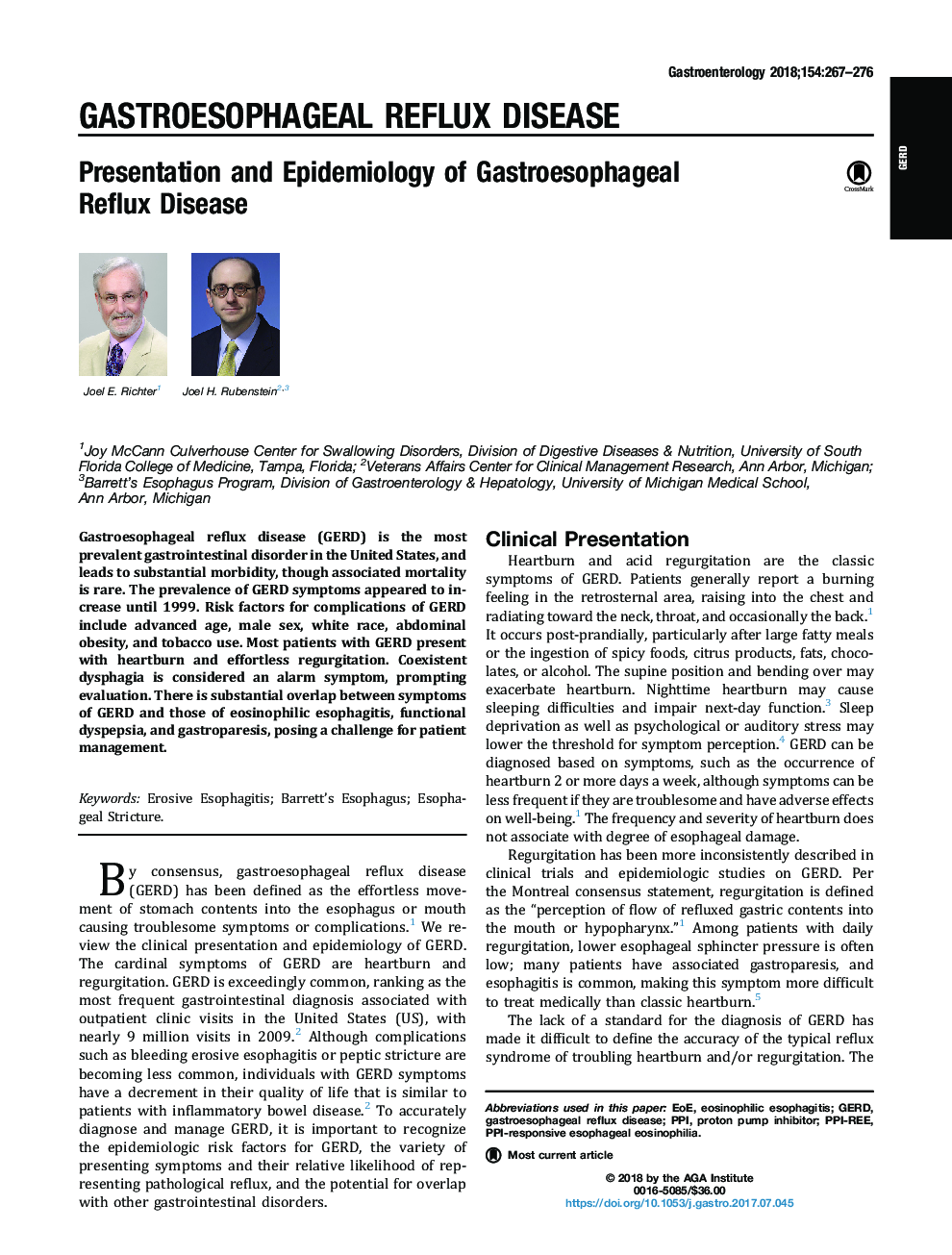| Article ID | Journal | Published Year | Pages | File Type |
|---|---|---|---|---|
| 8726983 | Gastroenterology | 2018 | 10 Pages |
Abstract
Gastroesophageal reflux disease (GERD) is the most prevalent gastrointestinal disorder in the United States, and leads to substantial morbidity, though associated mortality is rare. The prevalence of GERD symptoms appeared to increase until 1999. Risk factors for complications of GERD include advanced age, male sex, white race, abdominal obesity, and tobacco use. Most patients with GERD present with heartburn and effortless regurgitation. Coexistent dysphagia is considered an alarm symptom, prompting evaluation. There is substantial overlap between symptoms of GERD and those of eosinophilic esophagitis, functional dyspepsia, and gastroparesis, posing a challenge for patient management.
Keywords
Related Topics
Health Sciences
Medicine and Dentistry
Gastroenterology
Authors
Joel E. Richter, Joel H. Rubenstein,
